Nelly Wandji: Building A Business To Develop And Promote African Creativity Pt.2
From the retail world to the consulting firm
This conversation is part of the series The Underrated Fashion Professionals Talks, in which I interview fashion professionals from all over the world about different aspects of the industry.
Nelly Wandji is a force to be reckoned with. She has been working tirelessly for more than a decade now to highlight and help develop African creativity through MoonLook Africa, her consulting firm “for the prosperity of cultural & creative industries: elevating heritage, structuring entrepreneurship, fostering creativity & innovation.”
In the first instalment of my conversation with Nelly, we talked about:
Her background
How she came to work in the luxury world
The beginnings of Moonlook and the challenges she faced as an entrepreneur promoting African creativity in Paris
In this second instalment, Nelly talked about:
Finding the right location for her boutique
Pivoting from a boutique to a gallery
How her years of experience working in luxury and as a retail entrepreneur were the perfect fertile ground to create her consulting firm, Moonlook Africa.
ON FINDING THE RIGHT LOCATION FOR HER BOUTIQUE
“Finding the right location wasn't difficult, but the process was long because it was important to me not to ghettoise Africa. I didn't want to go where we were expected.”
I looked in the Marais, but it was extremely expensive, especially the key money [editor's note: key money is a sum that the tenant pays to the landlord of a commercial premises].
You haven't even paid the rent yet that you have to pay key money.
I therefore decided to extend my search by looking on the Left Bank side of the Seine in the area of rue de Rennes, Edgar-Quinet, rue du Cherche-Midi, not far from Bon Marché.
Finding the right location wasn't difficult, but the process was long because it was important to me not to ghettoise Africa. I didn't want to go where we were expected. I, at the time, lived in the 14th arrondissement [on the Left Bank], so I was used to a certain Paris.
I spent almost seven years in the 14th arrondissement. And before that, I was in the 17th. I took the metro at Guy Moquet and went to work. At the time, I was in a long-term internship in a company that was in the 6th arrondissement, on a street opposite Le Bon Marché. So, that was my journey departing from Guy Moquet to then go to work next to Le Bon Marché.
Since I spent most of my time on the Left Bank, it was natural to do my first pop-up in the Marais, which is quite a fashionable area.
But for the boutique, I was hesitating. People asked me why I didn't go to the area where there are Black people, in the 18th arrondissement. But my experience going there wasn’t to buy fashion, it was to buy plantain, food. I would have had trouble offering fashion there because I don't think it was the natural path for a customer.
And when I see nice things, it's on the Left Bank, avenue Montaigne, or Faubourg Saint-Honoré. If I want to tell something that sells dreams, I’d rather position myself in the same area because, from my point of view, the brands I tell have the same process as these great houses.
One might think that Faubourg Saint-Honoré is cheaper than the Marais, but that's not true.
So that was the process that pushed me towards the 8th arrondissement. I found an address, rue du Faubourg Saint-Honoré, opposite rue de Pentièvre. I knew this street because, when I was in my company, we did events at 105 rue Faubourg Saint-Honoré.
At the time, there was a nice bar, which was still on rue du Faubourg Saint-Honoré. I used to go there with my business school friends. Again, that was the Paris I knew, so it felt natural to go that way.
People criticised me for that choice, saying I wanted to be posh, but it had nothing to do with it. It's just that the story I was telling was coherent with that area for me.
Plus, I didn't necessarily know the Paris of the 18th arrondissement at the time. Today, it has changed a lot with gentrification.
But that's how I found the place and opened the Cabinet de Curiosités (Cabinet of Curiosities), which was a place where I organised events through exhibitions. It lasted three years. It was great, but at the same time, I had a lot of difficulties because the area was super affected by the Yellow Vests protests. During the whole crisis, every weekend, we had people against Emmanuel Macron protesting to get him out of the Elysée. It was painful. Each time, we had to protect the windows.
Consequently, we lost a lot of tourists, and they didn't come back. I lost my international clientele who resided between Hôtel du Collectionneur and the Bristol: people who went shopping on avenue Montaigne, at Cifonelli to pick up their suits, and to Liste Rouge [editor’s note: an 87-year-old maison making custom-made shirts and suits]. There, I had a clientele that was still very high-end and African, too.
I had a very high-end African customer base, who was into what we called a bit later, "quiet luxury," that is to say, people who are not big on logos or ostentatious. These were people looking for the exceptional piece or the signature know-how. With all these issues, I lost these customers. When Covid arrived, it was just too difficult to maintain the course.
My project was self-financed; I didn't have an investor. I had a collaborator who invested at one point, but he didn't have the help of an investor. We had co-invested to open the gallery, but we didn't have an investment fund behind us.
ON COVID MAKING HER CHANGE HER PERSPECTIVE: THE GALLERY
“In a pop-up, there's a relationship to the product that's different: there is a scarcity mindset because people know it's going to end and won't have the products anymore.
Whereas with a boutique, people don't come because they tell themselves it's there all the time.”
Covid allowed me to let go. I had my daughter at that time, and I started exploring a new facet of my life as a woman and as a mom. I wanted to work differently.
The Cabinet de Curiosités wore me out, because I gave it my 1000%. I gave it my everything, my time, my money, my energy, and I had reached saturation.
That phase with the Yellow Vests and Covid was very complicated, because my landlord was a big company that managed funds, and negotiating with them was very difficult. With a hedge fund company, it's not the same human relationship you can have with a landlord. These are big companies with lawyers, in brief, the whole battery to scare you.
I let go of that address, and I resolved to maybe become a nomadic gallery again, rethink my way of working. So that phase was salutary for me, because it allowed me to take a real break, refocus on myself, give birth to my daughter, and also see life differently: my priority was no longer necessarily having an address.
I told myself, I did that, I know what it is, I know what it represents, and I know what it takes for it to be exactly right and profitable. Per year, the gallery cost about 150,000 euros. Just the rent and charges, there I'm not talking about staff and all that.
Now, that meant that at minimum to break even and cover expenses, we had to make around 200,000 euros in turnover, and I didn't reach it the first year because I had based myself on the figures I had made with the pop-ups. But in a pop-up, there's a relationship to the product that's different: there is a scarcity mindset because people know it's going to end and won't have the products anymore.
Whereas with a boutique, people don't come because they tell themselves it's there all the time. When I realised that, after six months, I started organising exhibitions where I presented brands for a certain time. It was different from the boutique where the customer always finds the same thing; with the gallery, each month, there was something different. It was to establish a bit of this fear of missing out. At one point, it took off, but after we had the Yellow Vests, the experience became a bit chaotic.
During these three years, I think I had everything: the big works of the Paris City Hall, the Yellow Vests. And when I was just starting to get my head above water, Covid hit.
It's at that moment that I decided to stop, because, whether you sell or not, you have to pay the rent and charges.
Nonetheless, the last year was very beautiful because, in parallel, we did other types of activation. That year allowed me to clean the slate, because we still had pending payments that were starting to accumulate with the brands, because we were a bit late in payments.
So I cleaned that slate with the brands and the landlord, and I stopped. It wasn't profitable, and I was spending too much energy on it. I had to rethink another system.
To unlock the potential of Africa’s creative industries, we are running a survey to better understand consumer needs and supporting creative entrepreneurs to succeed both on the continent and internationally.
The survey is open to creators, institutions, investors, policy makers, and industry professionals of the African creative ecosystem.
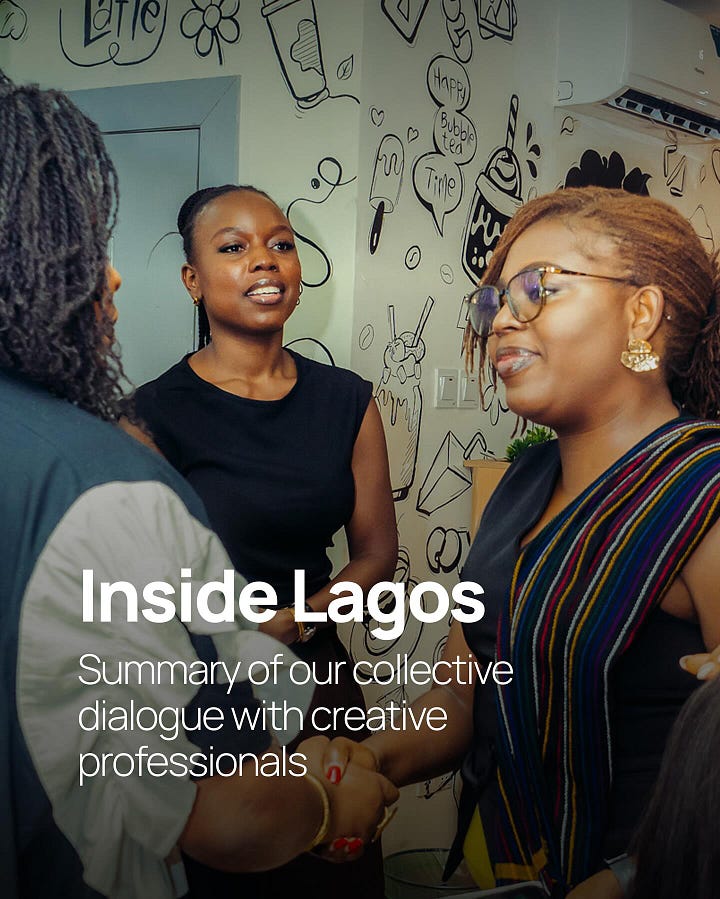
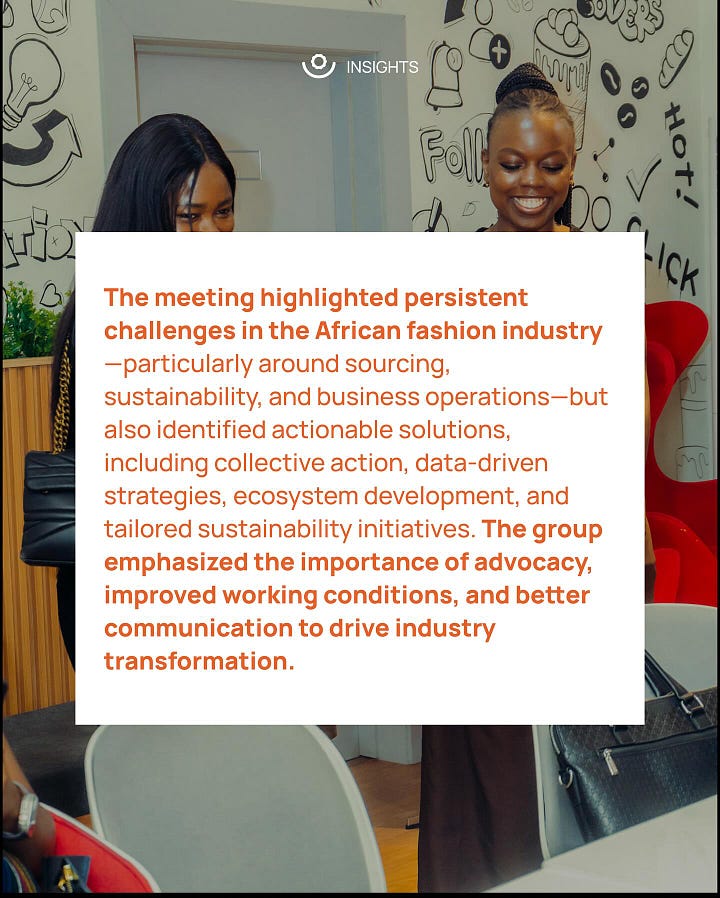
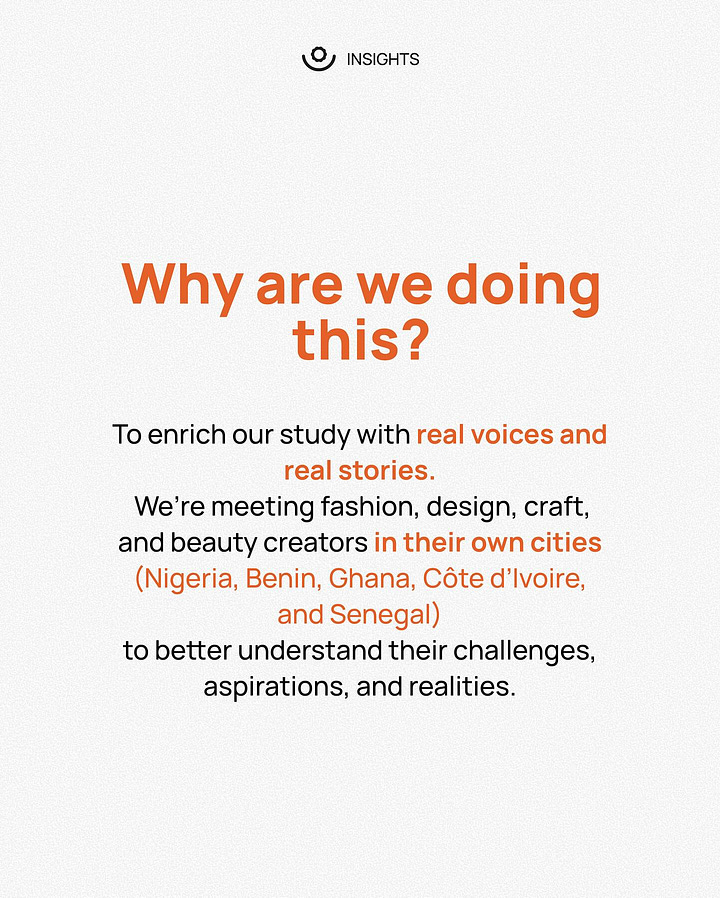
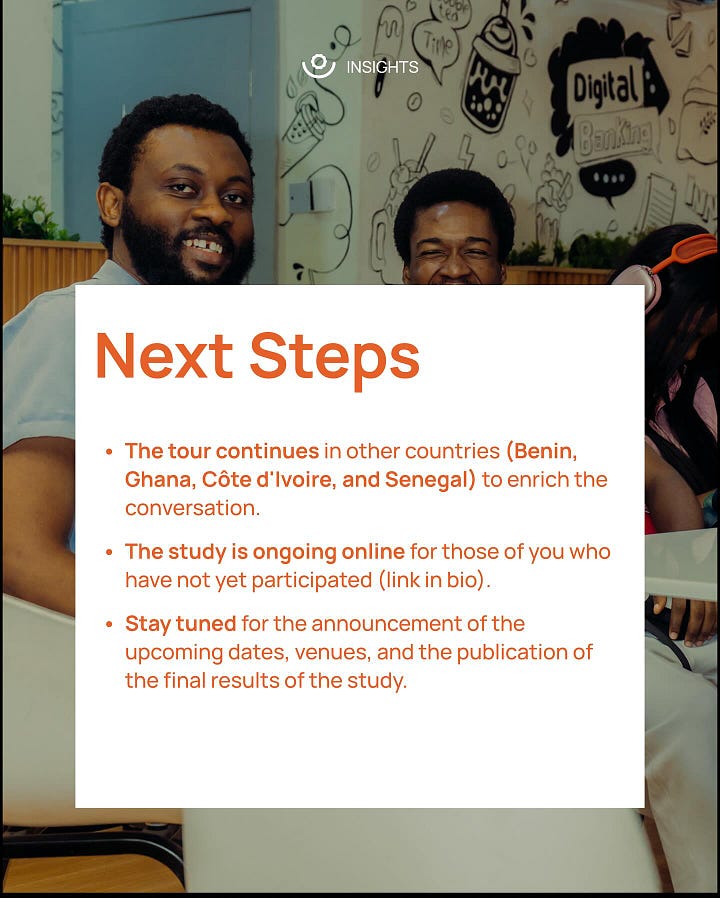
THE BEGINNINGS OF MOONLOOK AFRICA: THE CONSULTING AGENCY
“If the brands themselves don’t have big budgets, it's a bit difficult. And since I was very demanding about what I selected. I didn't have a portfolio of 100 brands. I always had about ten brands at a time. I never had more than 15 because it wasn't manageable. And it required a big machine that I didn't have.
That’s when I decided to change direction and become a brand consultant.”
In this new vision of that system, I wanted to keep going to the field because that's what I like, going to Africa, meeting artisans, going to workshops. When I had the gallery, I couldn’t do it as much.
I also thought about how I could collaborate with the contacts I had. Contacts could mean Piasa, the auction house that was opposite our gallery. They're number one in the design second market in France, in Paris. I also met people like Christophe Person, who became the director of the auction house Artcurial.
I made myself a network and realised I didn't necessarily need a place of my own. I could maybe collaborate with those who already have places.
And that’s what I did. In 2021, when we had the right to go out again, I did a partnership with Artcurial to present a selection of artisans I had spotted and who reflected my new project: Art&Exception. It was all about workshops on know-how, cultural heritage, and preservation of know-how.
So we did an exhibition with Artcurial on that project, thanks to Senegalese art curator N’Goné Fall, who supported us for the Africa 20201 project. And that changed the way I saw things.
During that time, Moonlook was in downtime. But I stayed curious. I visited workshops, met artisans, and came to Paris to tell their story through exhibitions. So the first year, in 2021, we did that with Artcurial. In parallel, I was on the selection committee of the Révélations Biennial2.
We thought about doing an Africa edition, which we did in 2022. It was all about arts and crafts, saying what the singularities of Africa are in terms of know-how, and arts and crafts.
In 2023, I still had a relationship with brands, so I told myself that if I had to work with brands again, I wouldn’t work with them like before. I didn’t want to bring their products to France and do the distribution because for it to be profitable, you have to sell a lot, and you have to sell all the time. So it's like a hamster wheel.
If the brands themselves don’t have big budgets, it's a bit difficult. And since I was very demanding about what I selected, I didn't have a portfolio of 100 brands. I always had about ten brands at a time. I never had more than 15 because it wasn't manageable and required a big machine that I didn't have.
That’s when I decided to change direction and become a brand consultant.
I talked a lot with the journalist, Emmanuelle Courrèges. We wanted to work as a collective to accompany brands. I would specialise in marketing, branding, and retail. Meanwhile, she would specialise in communication, press relations and supplier relations for boutiques that wanted to buy brands wholesale.
It was in this dynamic that she had contact with the French Institute in Lagos on an accelerator project. I found myself with a cohort of ten brands, and that's how the agency began to take shape in my mind.
I also had two missions with other brands thanks to people who recommended me by telling them, "If you want to launch an African brand, contact Nelly Wandji because she supports brands, and she will definitely be able to help you." So, I helped three brands like that to rework their positioning. And I also supported projects that needed to work on branding to present themselves in France.
Other projects remained confidential because they never launched. And gradually, that's how the idea of the agency came about. So with this project in Nigeria, where I had 10 brands all at once, it took on another dimension. I was forced to organise myself by having a team.
In 2024, we had a mission in Togo, and since 2025, we have also one in Botswana. With all these brands to manage, I told myself that the best format to support them would be to have an agency that could follow them on the entire strategy part, understand their targets, the markets they want to explore, with on one side, a creative team that takes care of graphics, campaign creation, and on the other, an operational team to help with a product launch, for example, of a Nigerian brand that wants to do a pop-up in Paris. They can rely on our operational team to do it and get in touch with people who are in our Parisian network.
That's how the agency took shape, even though, since 2014, brands were already reaching out to me for my expertise.
They valued my knowledge for my experience in selective distribution with luxury brands, my curiosity, and my general knowledge of the Parisian and creative scenes in France. That's how, at the end of 2024, I structured the agency to give it substance and clarity.
There's the part of the agency that takes care of consulting and brand support, and the other part that is much more focused on mentoring, developing acceleration programs; that's the academy. For example, if you go to the Moonlook website, you'll see that we have these two entities clearly presented.
On one side, the agency builds the strategy, and on the other, the academy provides support and works with institutions on acceleration and innovation programs.
Each time I observe what we need, what people ask me for, and how I can create a framework to support them, while also finding a balance with my life and personal values. I don't try to sell anything and everything to people, and above all, I don't try to show an Africa that doesn't resemble my foundation of values.
I will always take a very structured approach: if I talk about a brand, 90% of what this brand does will be made on the continent. It won't be produced in China, and then say it's made in Africa. That has never been my point.
That's how, gradually from 2014 to 2024, we have supported and collaborated with nearly 150 brands and designers.
Le Journal Curioso is a reader-supported publication. The idea behind that publication is to write about the creative industries from angles you won’t find in mainstream media. If you are enjoying this article, feel free to upgrade to a paid subscription.
A cultural and artistic initiative aimed at promoting contemporary African and Afro-diasporic creation.
The biennale of métiers d’art (craftsmanship) and creation


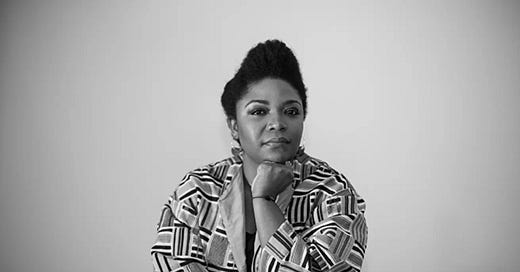


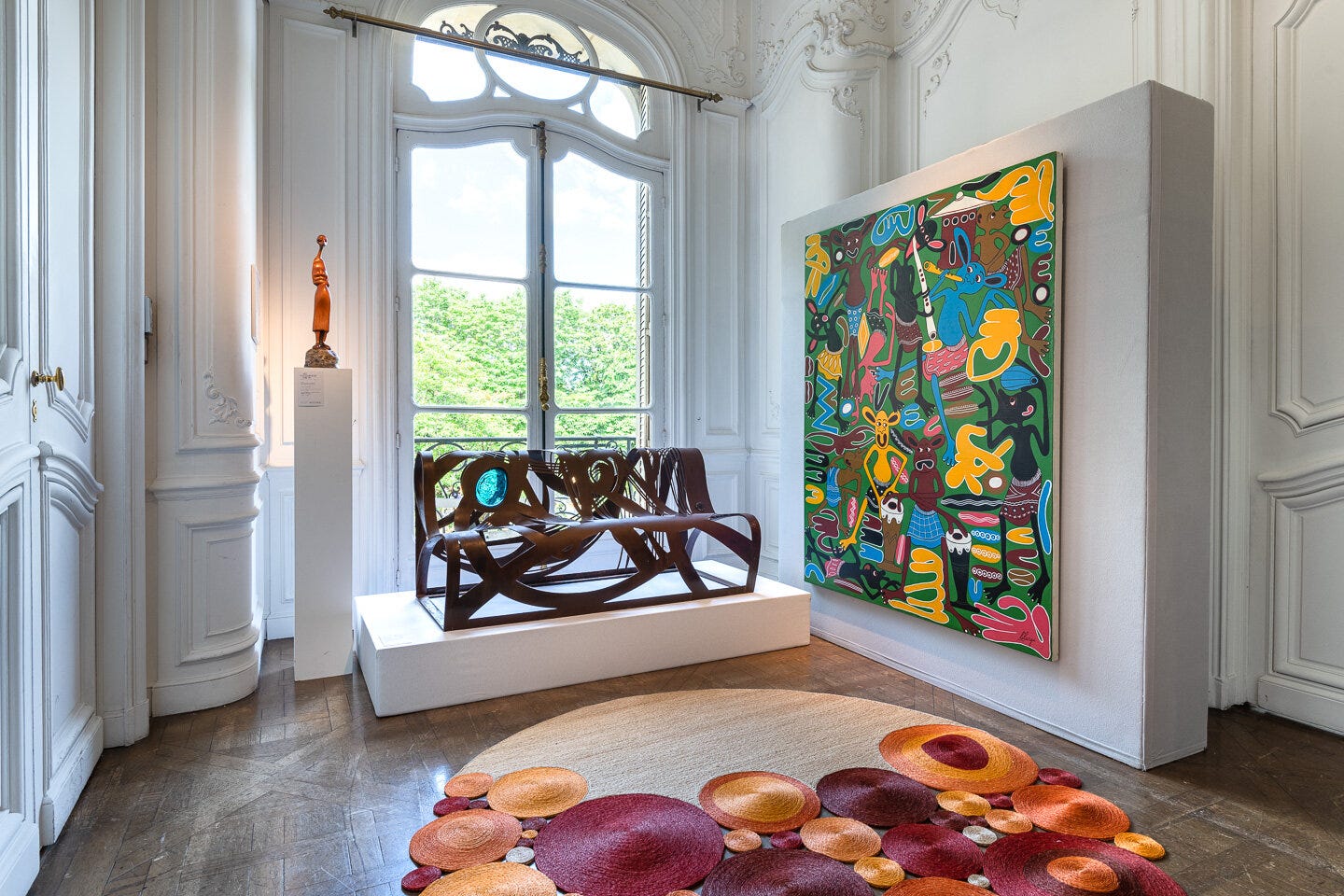

Ça détermination de soutenir les marques de luxe africaines est inspirante. Elle a vraiment galéré pour crée an environnement pour aider ces marques à établir une présence de le monde du luxe.